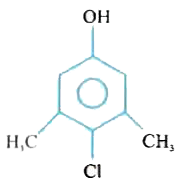Tentacles are present in
Hydra
Paramecium
Snail
Tapeworm
Step-by-Step Solution:
1. Understanding Tentacles: Tentacles are elongated, flexible structures that some animals use for various purposes, including capturing prey, sensing the environment, or locomotion.
2. Identifying the Options: The question provides four options: Hydra, Paramecium, Snail, and Tapeworm. We need to determine which of these organisms have tentacles.
3. Analyzing Hydra:
- Hydra belongs to the phylum Cnidaria.
- It has specialized cells called nidoblasts that are used for capturing prey.
- The tentacles of Hydra are equipped with these nidoblast cells, which help in the process of capturing food.
- Therefore, Hydra has tentacles.
4. Analyzing Paramecium:
- Paramecium is a protozoan and is microscopic.
- It does not have tentacles; instead, it has cilia that help in locomotion.
- Thus, Paramecium does not have tentacles.
5. Analyzing Snail:
- Snails have structures called antennae, which are used for sensing their environment.
- While these antennae may resemble tentacles, they are not classified as tentacles.
- Therefore, snails do not have tentacles.
6. Analyzing Tapeworm:
- Tapeworms are parasitic and live inside the intestines of their hosts.
- They do not have tentacles as they do not need them for capturing food; they absorb nutrients directly from their host.
- Thus, tapeworms do not have tentacles.
7. Conclusion: Based on the analysis, the only organism from the options provided that has tentacles is Hydra.
Final Answer: Tentacles are present in Hydra.
---
- Hydra belongs to the phylum Cnidaria.
- It has specialized cells called nidoblasts that are used for capturing prey.
- The tentacles of Hydra are equipped with these nidoblast cells, which help in the process of capturing food.
- Therefore, Hydra has tentacles.
- Paramecium is a protozoan and is microscopic.
- It does not have tentacles; instead, it has cilia that help in locomotion.
- Thus, Paramecium does not have tentacles.
- Snails have structures called antennae, which are used for sensing their environment.
- While these antennae may resemble tentacles, they are not classified as tentacles.
- Therefore, snails do not have tentacles.
- Tapeworms are parasitic and live inside the intestines of their hosts.
- They do not have tentacles as they do not need them for capturing food; they absorb nutrients directly from their host.
- Thus, tapeworms do not have tentacles.
Topper's Solved these Questions
- BOOK - BETOPPERSCHAPTER - CLASSIFICATION OF LIVING BEINGSEXERCISE - SUMMATIVE WORKSHEET (FILL IN THE BLANKS)10videos
CLASSIFICATION OF LIVING BEINGS
- BOOK - BETOPPERSCHAPTER - CLASSIFICATION OF LIVING BEINGSEXERCISE - SUMMATIVE WORKSHEET (FIND THE ODD ONE OUT)8videos
CLASSIFICATION OF LIVING BEINGS
- BOOK - BETOPPERSCHAPTER - CLASSIFICATION OF LIVING BEINGSEXERCISE - CONCEPTIVE WORKSHEET46videos
CLASSIFICATION OF LIVING BEINGS
- BOOK - BETOPPERSCHAPTER - FOSSILSEXERCISE - SUMMATIVE WORKSHEET12videos
FOSSILS
Similar Questions
How many silicon atoms are present in the atom are present in the anion of a pyrosilicates ?
View SolutionConsider the following characters : Marine habitat , Statocyst, Cnidoblast, Colloblast cells, Comb plates, tentacles
How many characters are present in all adult ctenophores without any exception?View Solution
Knowledge Check
- Question 1 - Select One
Tentacles are absent in
ABeroeBCtenoplaneCHormiphoraDObelia. - Question 2 - Select One
 is present in ADettolBPenicillinCDyesDAntifertility drug
is present in ADettolBPenicillinCDyesDAntifertility drug - Question 3 - Select One
Number of tentacles present in Sepia and Loligo is
A10B8C4D2
Tentacles are replaced by captacula in
View SolutionWhich of the statements regarding coelenterates is/are wrong
I. Cnidocytes are present on the tentacles and on the body
II. Diploblastic with cellular level of organisation
III. Polyp forms are free living
IV. Exhibit metagenesis
V. Polyps produce medusae sexually and medusae form polyps asexually.View SolutionWhich of the statements regarding coelenterates is/are wrong
I. Cnidocytes are present on the tentacles and on the body
II. Diploblastic with cellular level of organisation
III. Polyp forms are free living
IV. Exhibit metagenesis
V. Polyps produce medusae sexually and medusae form polyps asexually.View SolutionHow may tentacles are found in Hydra?
View SolutionJohnston's organ present in mosquitoes, are to detect vibration. They are present in
View Solution
